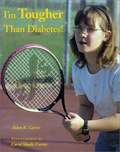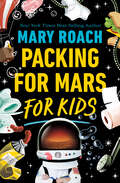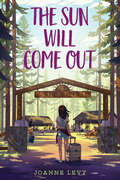Résultats de recherche de titre
Articles 1 à 20 sur 113

The boo-boos that changed the world: a true story about an accidental invention (really!)
Par Barry Wittenstein. 2018
Earle Dickson and his new bride Josephine begin their lives together. The end. (Not really. There's more.) Josephine has a…
proclivity for injuring herself. Earle attaches cotton to long strips of adhesive tape, telling Josephine to cut off a length when she needs one. Since Earle works as a cotton buyer at Johnson and Johnson, he shares his idea. They're a big hit. The end. (Again, not really!) After a few false starts (much like the hilarious "the end"s in this story), the Band-Aid is developed and becomes a massive hit. The end. (Really.). Grades K-3. 2018.
Does a hippo say ahh? (Early experiences)
Par Emily Bolam, Fred Ehrlich. 2003
Important moments in childhood are depicted lightly, but effectively, in a funny question-and-answer format. Does a hippo go to the…
doctor? Does a zebra? Everything young readers need to know to prepare for a check-up with their doctors is laid out humorously and realistically. Grades K-3. 2003.
Germs: fact and fiction, friends and foes
Par Lesa Cline-Ransome, James Ransome. 2017

Who says women can't be doctors?: the story of Elizabeth Blackwell
Par Marjorie Priceman, Tanya Lee Stone. 2013
Short biography of the first female American doctor, Elizabeth Blackwell (1821-1910). Explains society's limitations on women's occupations during the 1800s.…
Describes Elizabeth's determination to break down those barriers--even after receiving twenty-eight rejection letters from medical schools. For grades K-3. 2013
I'm tougher than diabetes!
Par Alden R. Carter, Alden R Carter, Carol S. Carter. 2001
Natalie explains her disorder--diabetes--and what she must do every day to keep her blood sugar at a safe level. She…
tells how her parents and sister help her and how supportive her classmates are. Includes a section of frequently asked questions and answers on diabetes. For grades 3-6. 2001
Dentist = El dentista (People in my community)
Par Jacqueline Laks Gorman, Tatiana Acosta, Guillermo Gutiérrez. 2002
Describe el trabajo del dentista y cómo el dentista ayuda a la gente. Explica qué se puede esperar cuando se…
visita al dentista. Para niños preescolares hasta el grado 2. Edición bilingüe en inglés y español
Solids, liquids, gases, and plasma
Par David A Adler, David A. Adler, Anna Raff. 2019

Packing for Mars for kids
Par Mary Roach. 2022
"What is it like to float weightlessly in the air? What happens if you vomit in your helmet during a…
spacewalk? How do astronauts go to the bathroom? Is it true that they don't shower? Can farts really be deadly in space? Best-selling Mary Roach has the answers. In this whip-smart, funny, and informative young readers adaptation of her best-selling Packing for Mars, Roach guides us through the irresistibly strange, frequently gross, and awe-inspiring realm of space travel and life without gravity. From flying on NASA's Weightless Wonder to eating space food, Packing for Mars for Kids is chock-full of first-hand experiences and thorough research. Roach has crafted an authoritative and accessible book that is perfectly pitched to inquiring middle grade readers." -- Provided by publisher
The day of the pelican
Par Katherine Paterson. 2009
When the hostilities between Albanians and Serbs escalate in Kosovo, Meli's older brother Mehmet is temporarily captured. Fleeing to refugee…
camps, the Lleshi family then immigrates to Vermont, where, after the terrorist attacks of September 11, 2001, they face mistreatment for being Muslim. For grades 5-8. 2009
What's so bad about gasoline?: fossil fuels and what they do (Let's-read-and-find-out Science 2 Ser.)
Par Anne F Rockwell. 2009
Discusses the history of petroleum use as fuel and the environmental problems caused by gasoline engines in cars and trucks.…
Explains ways to reduce pollution and suggests alternative sources of energy. For grades 2-4. 2009
Apollo 11: first men on the moon (Pocket space guide)
Par Robert Godwin. 2005
Provides a concise history of humankind's exploration of the Moon--from Greek astronomy to manned space flight. Profiles the three astronauts…
who traveled aboard Apollo 11 and chronicles their 1969 mission. Describes the scientific experiments conducted by the crew and their equipment. For grades 6-9. 2005
Kids to space: a space traveler's guide
Par Lonnie Jones Schorer. 2006
Students aged three to eighteen ask questions about planning a trip to the moon or a future orbiting hotel. More…
than eighty experts provide the answers on traveling and living in outer space. Covers astronauts, space exploration, and going into space with disabilities. For grades 5-8 and older readers. 2006
The South Beach diet quick & easy cookbook: 200 delicious recipes ready in 30 minutes or less
Par Arthur Agatston. 2005
Fast cookery for dieters recommended by the Florida cardiologist and author of The South Beach Diet (DB 56409). Includes healthy…
appetizers, main courses, and desserts that use a minimum number of ingredients and are easy to prepare. 2005
Are we alone?: scientists search for life in space
Par Gloria Skurzynski. 2004
Discusses the possibilities of identifying and communicating with another life-form in our vast universe. Describes the interconnectedness of research in…
many scientific disciplines to investigate hospitable planets. Includes profiles of scientists dedicated to seeking extraterrestrial intelligence. For grades 5-8. 2004
What is the world made of?: all about solids, liquids, and gases (Let's-read-and-find-out Science 2 Ser. #1)
Par Kathleen Weidner Zoehfeld. 1998

Why I sneeze, shiver, hiccup, and yawn (Let's-read-and-find-out-science Ser.)
Par Melvin Berger. 2000

The sun will come out
Par Joanne Levy. 2021
"Twelve-year-old Bea Gelman and her best friend Frankie are planning the BEST SUMMER EVER at Camp Shalom-a sleep-away camp. But…
at the last minute, Frankie bows out, leaving painfully shy Bea on her own. Just talking to strangers causes Bea to break out into ugly, blotchy hives. As if the hives weren't bad enough, Bea gets pranked by a couple of girls in her cabin and is betrayed by someone she thought was a new friend. Bea has had enough! She decides to spend her summer in the infirmary far away from everything that's stressing her out. No more boys (including her crush, Jeremy), no more horrible mean girls, and no more fake friends! At the infirmary, Bea meets Harry, a boy facing challenges way more intense than stress breakouts. Inspired by Harry's strength and positive outlook, Bea decides to face her fears-in a big way." -- Provided by publisher
La fission de l'atome (Les grandes découvertes scientifiques)
Par Alan Q Morton. 2006
Ce livre vous renseignera sur la fission de l'atome réalisée dans les années 1930. La fission de l'atome examine les…
théories et les réalisations pratiques qui ont mené à ce tournant majeur de la science nucléaire: le moment ou on a constaté que la fission du noyau d'un atome produisait une énergie qu'il était possible de domestiquer, pour le bien et pour le mal. L'ouvrage explique la structure de l'atome, les progrès qui ont permis de découvrir la fission et tous les incidents de parcours jusqu'au largage de la première bombe nucléaire en 1945. Il présente aussi les gens qui ont le plus contribué à cet événement décisif et examine son influence sur la physique atomique et sur la vie quotidienne des gens jusqu'à ce jour. -- 4e de couv
Tornade (Petit fleuve #2e)
Par Yvan DeMuy. 2023
Un livre de poésie sur l'hyperactivité, racontée du point de vue de l'enfant qui se sent différent. Destiné aux jeunes…
du primaire (tous les cycles), mais qui plaira aux 5 à 105 ans. Ce livre est une porte d'entrée dans l'univers de la poésie. Une introduction en finesse, tout autant pour les adultes que pour les enfants
Galilée et Einstein: petite conférence sur la science (Les petites conférences)
Par Françoise Balibar. 2006
Souvent les problèmes de la physique rejoignent le réel le plus immédiat. Le mouvement, par exemple, qui intrigue les hommes…
depuis toujours. La pierre qui tombe au pied du mat d'un bateau qui se déplace, l'impression de mouvement qu'on a dans un train à l'arrêt lorsque le train d'à côté démarre, et ainsi de suite... De petites choses, de petits décalages, mais à partir desquels s'ouvre toute la complexité du réel et ce que l'on allait appeler la relativité. En 1610, Galilée pointe sa lunette vers le ciel; à 26 ans, Einstein révolutionne la physique. C'est le parcours de ces deux hommes que retrace ici Françoise Balibar, deux très grands physiciens, deux hommes pris dans les combats de leur temps aussi. -- 4e de couv